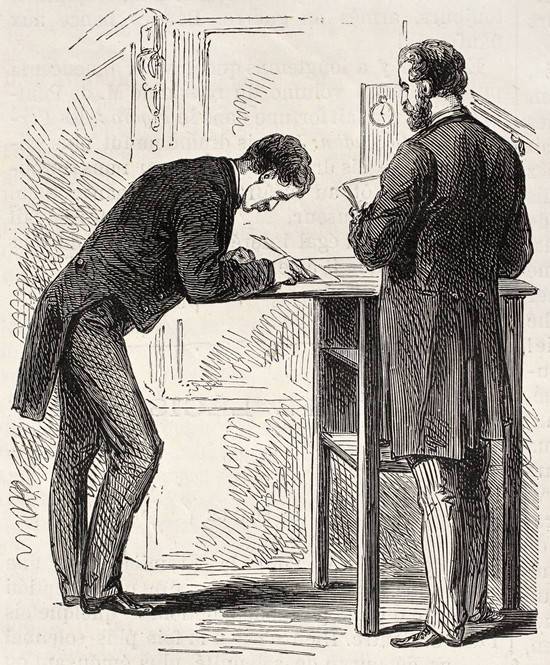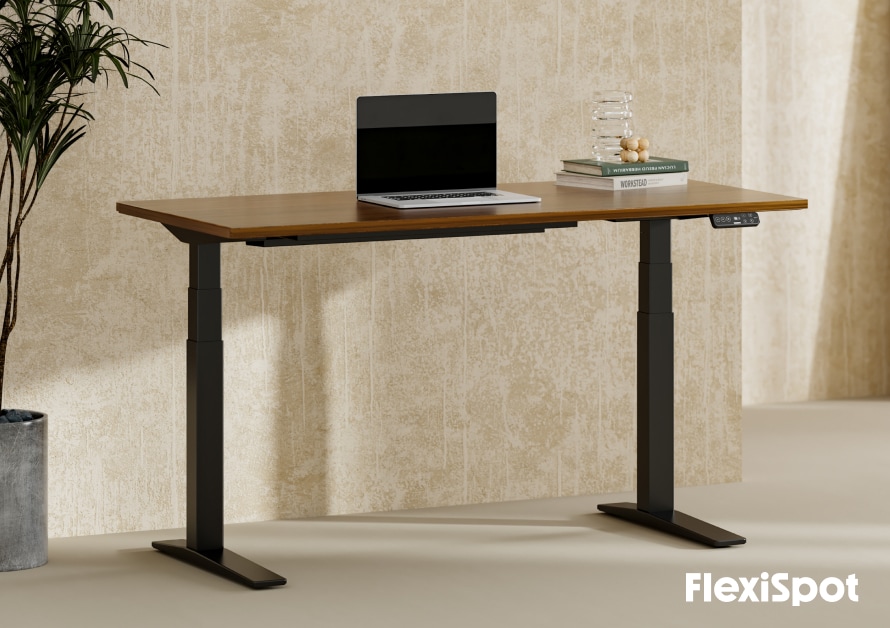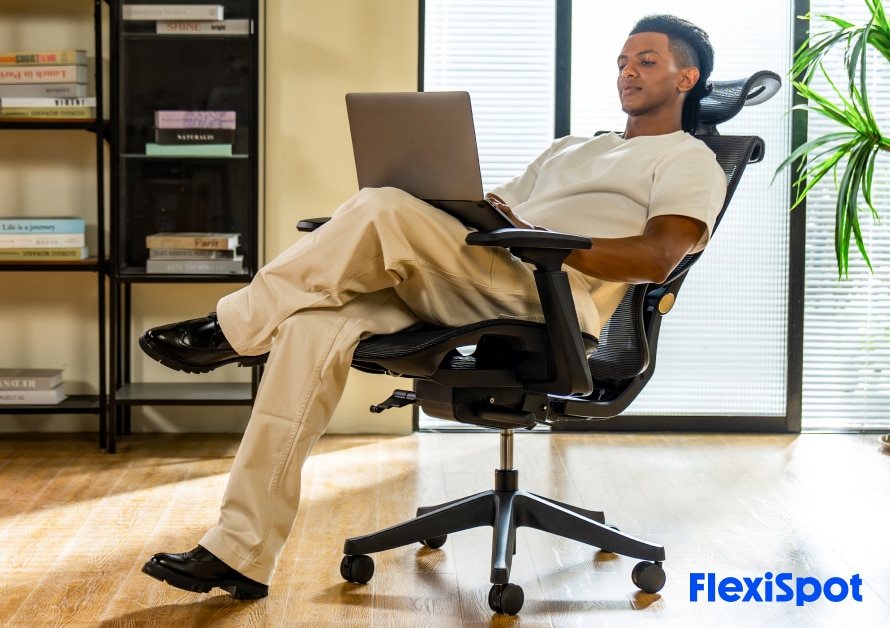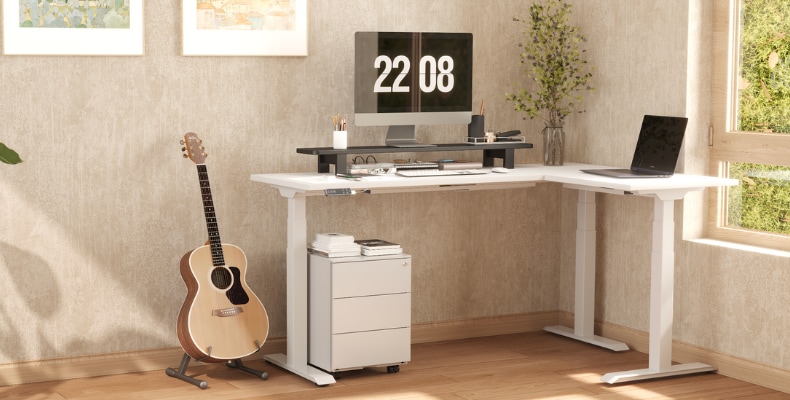It may feel like you just started hearing about standing desks a few years ago, but they've actually been around for over 600 years. There's no denying that the popularity of standing desks has taken off in the past few years — according to Google Trends, searches for "standing desk" have increased by a staggering 2,400% since 2008 — but they aren't a new concept.
The earliest known adopter of the standing desk was none other than famed renaissance man, Leonardo Da Vinci, in the 1400s. Many influential people, companies, and cultures have adopted the desk since then, eventually making it the workplace wellness trend it is today.
Early History of the Standing Desk
Standing desks were considered a status symbol in the 1700s. In an age when owning maps, books, and other documents was a privilege limited to the wealthy, handcrafted standing desks were used to spread these documents out for easier viewing.
In the 18th and 19th centuries, standing desks were actually more common than seated desks. A self-help book from 1848 advised professionals to practice penmanship on their feet because "nearly half" of all business writing was done at a standing desk. Inventors of the time filed patents for desks that could be raised and lowered with hand cranks — early models of the height-adjustable standing desk.
Employees in the 1800s were often not given their own individual desks, but instead shared communal desks, many of which were built at standing height. Inventories of office furniture from the 19th century suggest that these communal standing desks were particularly common in government offices such as state legislatures.
Famous Standing Desk Users
Known as much for his inventions as his artistic accomplishments, Leonardo Da Vinci did not actually invent the standing desk. However, he did use one while designing early prototypes for modern inventions, such as flying machines and armored cars, and while he painted the Mona Lisa.
He's not alone — many notable thinkers, leaders, and writers throughout history have favored standing desks. Napoleon Bonaparte, Emperor of France in the early 1800s, is said to have used a standing desk while strategizing for battle. On the opposite side of the Atlantic, American founding father Thomas Jefferson designed his own "tall desk" with six legs for added stability, where he penned such nation-defining documents as the Declaration of Independence.
Ernest Hemingway, author of some of the most well-known novels in the American canon, worked at a makeshift standing desk he created by setting his typewriter on top of a bookcase. Great British author Charles Dickens also had a standing desk in his office, which is described as housing "books all round, up to the ceiling and down to the ground; a standing-desk at which he writes; and all manner of comfortable easy chairs."
And when he was not working or napping in bed, Britain's wartime prime minister Winston Churchill preferred a standing desk for working on his many books and speeches. This vantage point allowed him to spot mistakes and corrections with a keen eye.
Origins of Using Standing Desks for Wellness Benefits
Presbyterian minister Jon Orton advised in 1797 that, "A sedentary life may be injurious. It must therefore be your resolute care to keep your body as upright as possible when you read and write; never stoop your head nor bend your breast. To prevent this, you should get a standing desk."
Thanks to modern technology, we have proven the cardiovascular dangers of excessive sitting many times over. However, long before medical and scientific advancements made it possible to acquire actual data to support the theory, some medical professionals already suspected a connection between standing and improved circulation.
In 1899, Dr. Ludwig Wilhelm Johannes Kotelmann published a book called School Hygiene in which he devotes an entire chapter to the ergonomics of the school desk, discussing factors such as backrest positioning, desktop height, and distance between chair and desk. In that chapter, he also touches on the health benefits of upright workstations, even including a design for an early height-adjustable sit-stand desk.
Explaining his rationale for the benefits of standing desks, Dr. Kotelmann writes, "It has in late years been repeatedly suggested that even with the proper kind of desk much sitting is liable to injure the abdominal organs and the circulation. Desks have accordingly been proposed which can be arranged for standing as well as sitting."
Standing Desks in the Modern Era
Despite the fact that benefits of standing were well-known or suspected long before the 21st century, the industrial revolution changed everything. As the rise of technology transformed the American workforce, automating jobs that were once done by humans, more and more people found themselves working at a desk — a seated desk. In 1960, only 15.5% of jobs were sedentary. Today, only 20% of jobs are physically active.
The standing desk trend we're experiencing today is a reaction against our increasingly sedentary lifestyle, both at work and at home — especially as a growing body of research provides data that proves what people have suspected since the 1700, that sitting too much comes at a cost to physical health.
All signs point to standing desks being here to stay. Since 2014, the number of companies providing standing desks for employees has increased by 33%, according to data from the Society for Human Resource Management.
We may have been slow to course-correct from our sedentary ways, but thanks to the momentum of interest in office ergonomics, offices in 10 years will likely have more activity embedded into the work culture than we see today. Ergonomic office accessories like desk bikes, mini steppers, treadmill desks, and yoga balls will continue to grow in popularity, and we can expect to see new office furniture technologies that promote movement enter the market in the coming years.


















